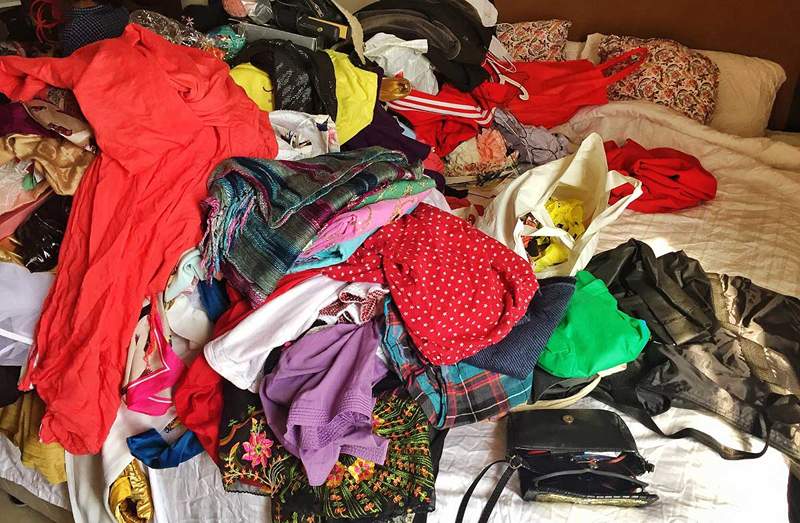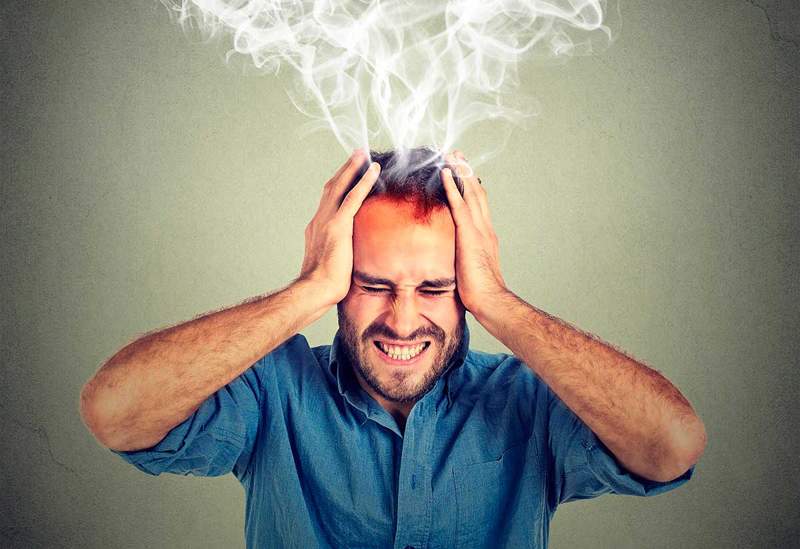Collection and accumulation touci, when we fail to give off from our belongings

- 2025
- 502
- Charles Fay
The bump of accumulation or collecting is a compulsive accumulation disorder in which the person experiences a difficulty in separating or getting rid of their belongings.
People with OCD (obsessive compulsive disorder) of accumulation or by collecting have the perception that they must keep the things they obtain and, given the idea of detaching themselves, they experience anguish. This produces an accumulation of objects that is excessive and whose value is often not real.
It should be noted that the bump of accumulation or by collecting It is not the same as collectors' behavior, since people with this disorder accumulate objects of a disorganized and cannot even detach from things that have little to or no value.
So, specialists often diagnose accumulation OCD or by collecting when the person has accumulated many possessions, it cannot be detached from them, he feels distressed, or this incapacitates him to function in everyday life.
Content
Toggle- The bump of accumulation or by collecting
- TOC symptoms for accumulation or by collecting
- The reasons why objects are kept
- Causes
- Complications
- When to go to the doctor?
- Bibliography
The bump of accumulation or by collecting
The symptoms of accumulation They can start in adolescence, being able to be mild at the beginning, but They tend to get worse gradually as the person earns older. It is estimated that this disorder affects 2 and 6 % of the population.
People with this disorder can have crowded houses of objects, with narrow corridors, tables, sinks, kitchens, stairs and desks, as well as any surface, full of belongings. When there is no space inside, it is possible that accumulation extends to vehicles, garage, patio or other places.
It is very frequent that those who suffer from the disorder do not consider it a problem and this makes it more difficult to establish and follow a treatment.
According to the International OCD Foundation, the compulsive accumulation was considered a type of TOC. In fact, it is considered that 1 in 4 people with OCD also suffer from compulsive accumulation. However, it can also be developed with other mental disorders, such as dementia or schizophrenia.
In general, people suffering from accumulation or collecting accumulate objects such as paper, mails, books, clothing, containers such as paper bags, plastic, boxes, decomposition garbage, among others.
In some cases, the person may accumulate waste from animals or humans, although this is less frequent. What does notice is that the objects are rarely valuable.
This disorder was first included in the diagnostic and statistical manual of mental disorders in its fifth edition (DSM-5). According to the author Robert Obando Ocarpio, in his study on accumulation disorder, people with bacco of accumulation or by collecting They can not be able to sleep in their own bed, sit in a room, or cook their food, because the batteries of belongings are so many that cover complete areas of the house, limiting the use and access to them.
TOC symptoms for accumulation or by collecting
Among the symptoms that stand out the most is to acquire and store an overwhelming amount of objects, in a disorganized way, in habitable home spaces, with difficulty getting rid of them. These are usually the first symptoms and appear in adolescence.
As the person is older, he begins to acquire more things for which he has no space and that does not really cover an immediate need. Thus, When age is adult, symptoms are usually serious and more difficult to treat.
Another highlight is that the bump of accumulation or by collecting is manifested in time. At first, it can be private behavior, but over time, it becomes so significant that it attracts the attention of other people.
Thus, among their symptoms, the following tell:
- Excessively acquire objects that are not necessary and for those that are not space;
- Difficulty getting rid of objects, regardless of their real value;
- Feel the need to keep objects;
- Anguish when thinking about getting rid of them;
- Accumulate in a disorderly way until the rooms are no longer habitable;
- Have a tendency towards perfectionism, indecision, postponement, evasion and organization and planning problems.
This disproportionate acquisition of objects and not being able to discard them results. In addition, these belongings that have accumulated generate disorder in the passage zones, so many spaces are useless. Thus, people with accumulation or collecting may not be able to use the kitchen or bathroom to take a shower.
At the same time, The accumulation of garbage and decomposed food becomes a situation characterized by unhealthiness.
 Daniel Wegner's opponent process theory
Daniel Wegner's opponent process theory The reasons why objects are kept
People who tend to save objects obsessively do it because They believe in the future they could need them or because they consider that the piece is unique. In certain cases, objects have an emotional meaning that brings memories of times in which they were happy. Also, these people feel more security by being surrounded by the things they have kept.
Another highlight is that Some people not only tend to collect objects, but also animals, getting up to hundreds of pets, which can be confined inside or outside. These pets, in general, for representing a large amount, do not usually receive due attention, so, due to unhealthy conditions, both people and pets are at risk of health.
Causes
So far, the causes of compulsive accumulation disorder are not entirely clear, so the functioning of the brain, genetics, as well as stressful events in the life of accumulatory people as possible causes are being studied.
Complications
Those who suffer from the TAC of accumulation or by collecting can be exposed to several risks, such as falls, family conflicts, injuries or possibility of being trapped between objects that fall, conflicts with the family, loneliness, social isolation, unhealthiness conditions that place their health at risk; Fire risks, legal problems, such as an eviction, or poorly efficient performance in employment.
 General characteristics of obsessions
General characteristics of obsessions When to go to the doctor?
If anyone identifies with the described symptoms, or a loved one suspects that their relative can suffer symptoms of compulsive accumulation disorder, it is best to go with a mental health professional as soon as. Many communities have support institutions to solve this type of condition.
Although it is not easy, compulsive accumulation disorder can place the health of a loved one at risk, so the most correct thing is to establish contact with local authorities, public health, child protection services or older people, or organisms of animal welfare.
In some cases, antidepressant treatment, accompanied by cognitive-conditions.
Obsessive-compulsive character test
Bibliography
- Capuzzi, f. (2017). Accumulation disorder. In IX International Congress of Research and Professional Practice in Psychology XXIV Research Days XIII Meeting of Researchers in Mercosur Psychology. Faculty of Psychology-University of Buenos Aires.
- International OcD Foundation. What is compulsive accumulation syndrome?
- Olive, e. M. (2012). Accumulation behaviors. Argentina of Neuropsychiatric Clinic, 17 (4), 293-301.
- Obando Carpio, R. (2016). Accumulation disorder: analysis of evidence as a psychiatric entity, about a case.
- « Stress and stressors, which are and how they affect us
- The 6 personality types according to Holland »

